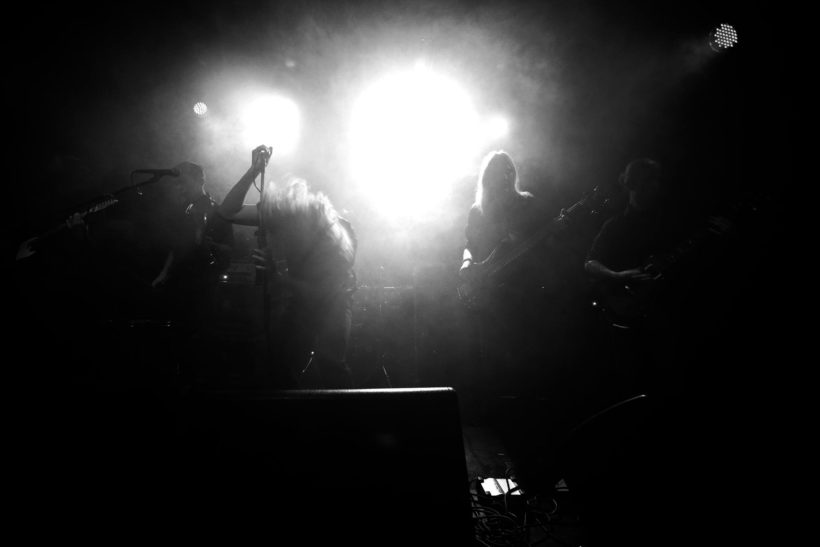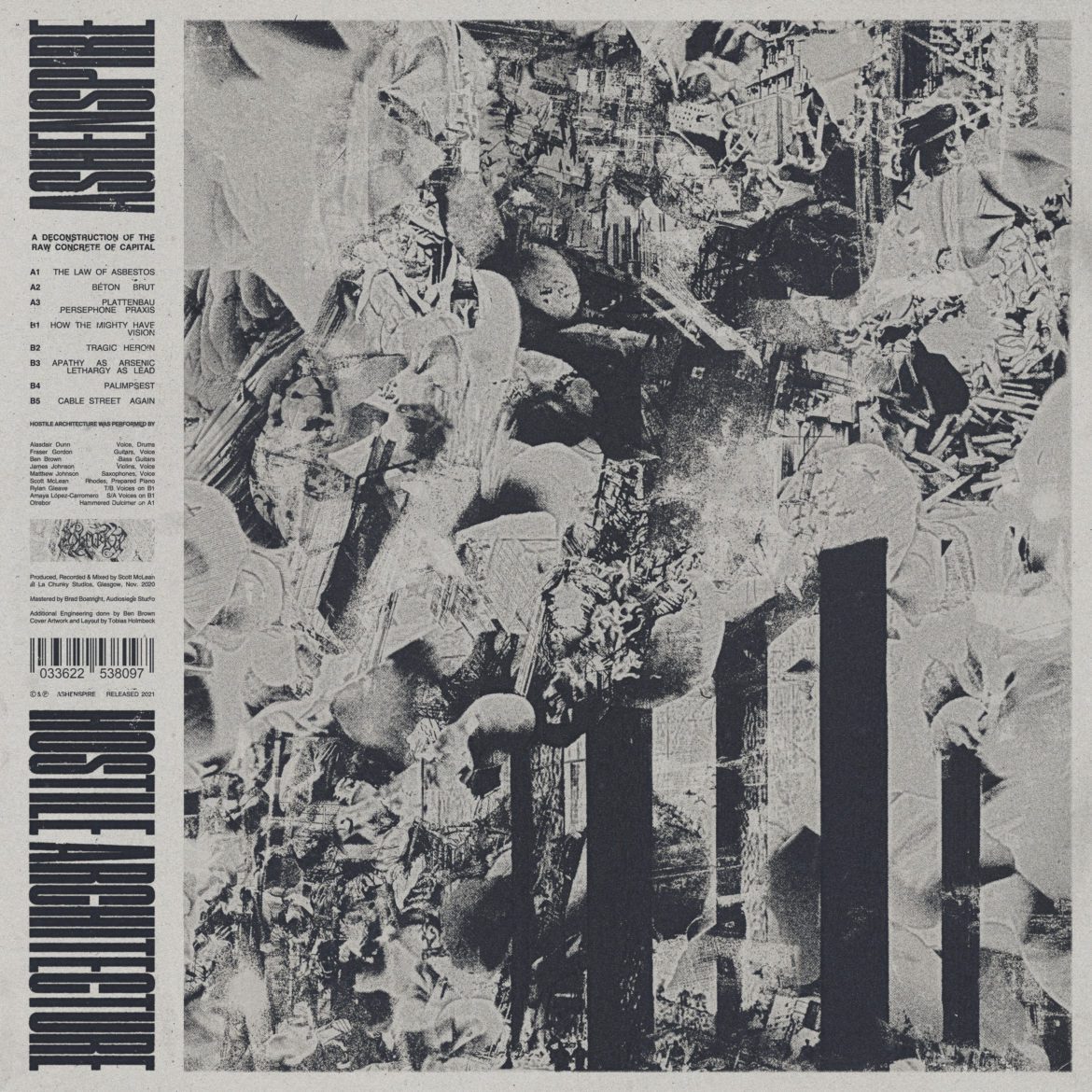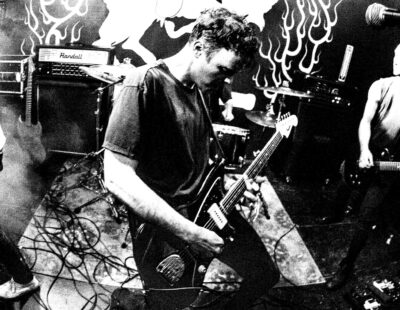
After forming in 2013, Glasgow-based avant-garde metal collective Ashenspire released their thoughtfully blackened debut in 2017. Speak Not of the Laudanum Quandary was a scathing exploration of British Imperialism’s brutality. Two years later, the band turns their critical eye to the ever-widening wage gap that turned the working class into capitalist cannon fodder. Hostile Architecture is a timely rumination on urban isolation and class disparity. Decibel Magazine is thrilled to share this album a few days early with an exclusive premiere before the July 15th release date from Code666 and Aural Music.
If you’re expecting an orthodox black metal record, Ashenspire have loftier pursuits. There’s nothing derivative about Hostile Architecture. Starting with “The Law of Asbestos,” the album shudders and screams with its own singular energy. Vocalist, drummer, lyricist, and primary composer Alasdair Dunn embodies the enlightened mania of Nick Cave’s performances in The Birthday Party. Meanwhile, violins and saxophone share soundscapes with heavy distortion throughout. While the rabid crescendo of “Béton Brut” and the searing single “Tragic Heroin” contain some of the album’s most metallic elements, it’s an album defined more by atmosphere and mood than genre devotion. They swing wildly from haunted jazz to blastbeats; from John Zorn’s Tzadik records to A Forest of Stars and Giant Squid. “How the Mighty Have Vision” bristles with Lingua Ignota’s poisonous grandeur. Fraser Gordon’s riffs continuously shapeshift in standout track “Cable Street Again” as his strings create and destroy worlds. But Hostile Architecture is largely driven by Dunn’s possessed ravings and agile percussion as he attacks the album’s central theme. Ashenspire are artists, complete with a mission statement.
“Hostile Architecture is a sonic exploration of the ways that subjects under late capitalism are constrained and set in motion via the various structures that uphold stratification and oppression in urban contexts,” Dunn explains. “It is inspired by brutalist, postmodern and utilitarian architectural structures that are found throughout post-industrial cities, hauntological in nature, being designed to provide for the populace through affordable housing but ultimately cost-cutting exercises and unfit for purpose. The term hostile architecture refers to design elements in social spaces that deter the public from using the object for means unintended by the designer, e.g. anti-homeless spikes, which the album presents as emblematic of a foundational contempt for the poor and working class, an exemplification of a status quo fortified in concrete. The album provokes the listener to explore the dissonance of these contradictions in their own circumstances and perhaps consider possibilities for a world beyond what Mark Fisher called “Capitalist Realism.”
“We’re immensely grateful for the opportunity to share this music with you,” the band adds, “and that somewhere amongst all this tumult, you find something in there that resonates with you, and connects you that little bit more to your fellow folk.”
Descend the stairwell into the concrete nightmare of Ashenspire’s Hostile Architecture below.
Pre-order Hostile Architecture on Bandcamp HERE
Follow Ashenspire on Facebook for news and updates HERE








